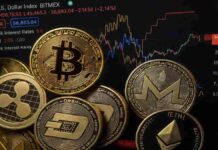On October 13, 2025, the Royal Swedish Academy of Sciences answered a question on the minds of economists worldwide: Who won the 2025 Sveriges Riksbank Prize in Economic Sciences in Memory of Alfred Nobel? The prestigious award, often called the Nobel Prize in Economics, was bestowed upon Joel Mokyr of Northwestern University, and jointly to Philippe Aghion of Collège de France, INSEAD, and the London School of Economics, and Peter Howitt of Brown University. They were honored “for having explained innovation-driven economic growth,” with Mokyr recognized for identifying the prerequisites for sustained technological progress, and Aghion and Howitt for their theory of growth through creative destruction. The 11 million Swedish kronor (roughly $1.05 million) prize marks the final Nobel announcement of the year.
As economies navigate AI-driven disruptions, climate challenges, and post-pandemic recovery, the work of these laureates offers critical insights into why modern prosperity emerged and how it can be sustained.
Why Did Growth Become Sustained? Mokyr’s Historical Lens
For most of human history, economic stagnation was the norm. Inventions like the wheel or gunpowder brought temporary gains, but growth inevitably fizzled out. So, what changed? Joel Mokyr, a Dutch-born economic historian, tackled this question by diving into historical records. His answer lies in the synergy of scientific understanding and cultural openness that emerged during the Enlightenment and Industrial Revolution.
Mokyr found that pre-industrial societies often relied on “prescriptive knowledge”—practical know-how without deeper explanations. This limited progress, as innovations like alchemy failed to scale without understanding why they worked (or didn’t). By the 18th century, Europe’s Scientific Revolution introduced “propositional knowledge”—scientific theories that fueled iterative advancements. Think of James Watt’s steam engine, refined through insights into vacuums and pressure.
But knowledge wasn’t enough. Mokyr emphasizes that societies needed openness to new ideas and institutions to manage change. Europe’s political fragmentation fostered competition and knowledge exchange, while institutions like Britain’s Parliament mediated conflicts between innovators and entrenched interests. This “culture of growth” sparked the Industrial Revolution around 1760, enabling sustained GDP growth of about 1.5% annually in leading economies—doubling incomes within a lifetime and transforming living standards, health, and connectivity.
How Does Innovation Drive Growth? The Creative Destruction Model
While Mokyr explains the historical “why,” Philippe Aghion and Peter Howitt provide the “how” through their groundbreaking 1992 model of creative destruction, a term coined by Joseph Schumpeter in the 1940s. Their question: How does innovation sustain economic growth over time? Their answer revolutionized growth theory.
Aghion and Howitt’s endogenous growth model shows innovation as an internal economic engine. Firms invest in R&D to create better products or processes, earning temporary monopolies via patents. These profits fund more research, but the cycle is relentless: a new innovator’s breakthrough climbs the “innovation ladder,” displacing the old leader. This process—creative for its novelty, destructive for its impact on outdated firms—drives stable, long-term growth. In the U.S., where over 10% of firms fail annually, this churn is a feature, not a bug.
Their model highlights trade-offs for policymakers. Strong patents spur R&D but risk monopolies; antitrust policies prevent dominance but may deter investment. It also explains innovation’s dual nature: new technologies create spillovers (knowledge builds on knowledge) but can lead to “business stealing,” where private gains outstrip social benefits. These insights guide modern debates, from regulating tech giants to designing labor policies that cushion workers displaced by automation.
Why Does This Matter Today?
The laureates’ work answers a pressing question: How do we sustain growth in an era of rapid technological change? As committee chair John Hassler put it, “Economic growth cannot be taken for granted. We must uphold the mechanisms that underlie creative destruction, so that we do not fall back into stagnation.” In 2025, with AI reshaping industries and climate goals demanding green innovation, their ideas inform strategies to balance progress with stability.
The announcement has drawn global praise. Financial Times’ Robin Wigglesworth lauded the trio for illuminating “innovation-driven economic growth,” while Bloomberg noted its relevance to why some economies thrive and others stagnate. Reuters and The Economic Times emphasized the shift from historical stagnation to today’s innovation-fueled prosperity.
Who Are the 2025 Laureates?
- Joel Mokyr (born 1946, Netherlands): Yale PhD (1974), Lawrence Rockefellar Professor at Northwestern. His book A Culture of Growth traces innovation’s historical roots.
- Philippe Aghion (born 1956, France): Harvard PhD (1987), professor at Collège de France, INSEAD, and LSE. His models shape EU competition policy.
- Peter Howitt (born 1946, Canada): Northwestern PhD (1973), Lynwood Smith Jr. Professor Emeritus at Brown. His work with Aghion redefined growth theory.
A Timely Recognition
So, who won the 2025 Nobel Prize in Economics? Joel Mokyr, Philippe Aghion, and Peter Howitt—three scholars who answered why and how innovation drives prosperity. Their work reminds us that sustaining growth requires nurturing knowledge, competition, and openness, especially as the world faces new economic frontiers. For more details, explore the Nobel Foundation’s resources on the 2025 prize.





